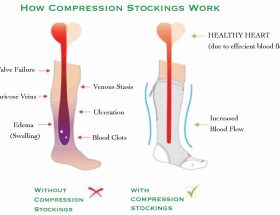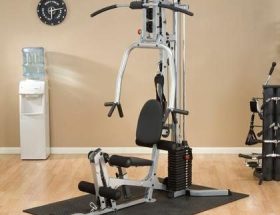Yoga is a holistic practice that combines physical postures, breathing exercises, and meditation techniques. It is well-known for its ability to promote flexibility, strength, and relaxation. In recent years, yoga has gained immense popularity worldwide, and many fitness enthusiasts are incorporating it into their regular workout routines. If you are already engaged in a bodyweight fitness routine, adding yoga can provide numerous benefits for your mind, body, and overall well-being. This article explores how you can seamlessly integrate yoga into your bodyweight routine, allowing you to maximize your fitness goals and experience the transformative power of yoga.
Benefits of Combining Yoga with Bodyweight Exercises
Integrating yoga into your bodyweight routine can offer a multitude of advantages. Here are some key benefits to consider:
Enhanced Flexibility:
Yoga involves various stretching poses and sequences that target different muscle groups in the body. Regular practice of these poses can significantly enhance your flexibility, making it easier to perform bodyweight exercises with better form. Improved flexibility can also reduce the risk of injury during your workouts.
Increased Balance and Stability:
Many yoga postures focus on balance and stability. By incorporating these poses into your bodyweight routine, you can enhance your core strength and stability, which are vital for performing advanced bodyweight movements. Moreover, improved balance can help you maintain proper form and prevent falls or injuries.
Amped-up Strength:
Bodyweight exercises, such as push-ups, squats, and planks, already contribute to building strength. By adding yoga to your routine, you can further challenge your muscles and boost your overall strength. Yoga poses like chaturanga, crow pose, and chair pose require significant muscular engagement, helping you build functional strength and endurance.
Stress Relief and Mental Clarity:
Yoga is renowned for its stress-relieving and mood-enhancing benefits. Practicing yoga alongside your bodyweight exercises can provide you with a much-needed mental break from your routine, helping you relax and clear your mind. The breathwork and meditation techniques in yoga can reduce stress levels, promote relaxation, and enhance mental clarity, creating a perfect balance between physical and mental well-being.
Sample Yoga Poses to Incorporate into Your Routine
To begin incorporating yoga into your bodyweight routine, start by including a few key poses. Here are some sample poses that complement bodyweight exercises:
Downward-Facing Dog (Adho Mukha Svanasana):
This pose is excellent for stretching the entire body and increasing upper body strength. It also helps improve shoulder and hamstring flexibility, making it easier to perform exercises such as push-ups and lunges.
Warrior II (Virabhadrasana II):
Warrior II is a powerful pose that strengthens the legs, opens the hips, and improves overall balance. It complements squats and lunges, offering a mindful approach to lower body conditioning.
Plank Pose (Phalakasana):
Plank pose is a fantastic core-strengthening posture that engages the muscles of the abdomen, back, and arms. By integrating plank into your bodyweight routine, you can strengthen your core and improve endurance, which will enhance your performance in other exercises like sit-ups and mountain climbers.
Child’s Pose (Balasana):
Child’s pose is a restorative posture that stretches the lower back, hips, thighs, and ankles. It serves as an excellent relaxation pose to include between intense bodyweight exercises, promoting recovery and reducing muscle soreness.
Incorporating Yoga Sessions in Your Routine
Adding yoga sessions to your bodyweight routine can be done in various ways. Here are a few suggestions to help you integrate yoga seamlessly:
Pre-Workout Warm-up:
Dedicate 10-15 minutes before your bodyweight workout to go through a quick yoga sequence. This helps warm up your muscles, increases flexibility, and prepares your mind for the upcoming workout session.
Alternate Days:
Designate specific days for your bodyweight routine and alternate them with yoga practice. This way, you ensure a balanced workout regimen that targets both strength-building and flexibility.
Active Recovery:
On your rest days, indulge in a gentle yoga session that focuses on stretching and recovery. This helps alleviate muscle soreness, improves blood circulation, and promotes relaxation.
Post-Workout Cool-down:
End your bodyweight routine with a few minutes of yoga poses. This allows your body to cool down gradually, prevents stiffness, and promotes overall relaxation.
Final Thoughts
Incorporating yoga into your bodyweight routine provides a balanced approach to fitness that targets both physical and mental well-being. By combining yoga with bodyweight exercises, you can experience enhanced flexibility, increased strength, improved balance, and reduced stress levels. Remember to start with a few basic yoga poses and gradually progress to more challenging ones as you become comfortable. With consistency and dedication, the fusion of yoga and bodyweight exercises can transform your fitness journey, ensuring a well-rounded and fulfilling practice. Namaste!







